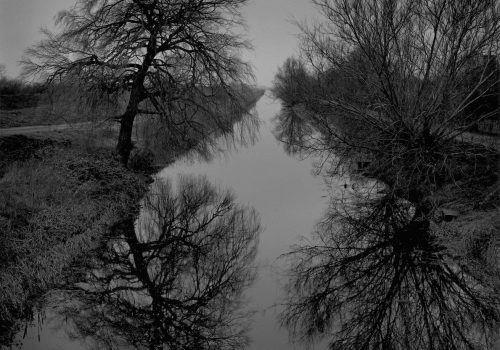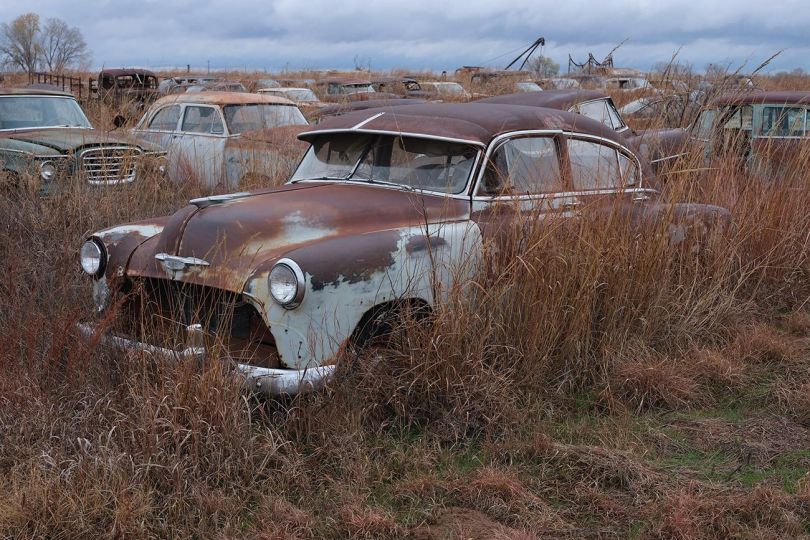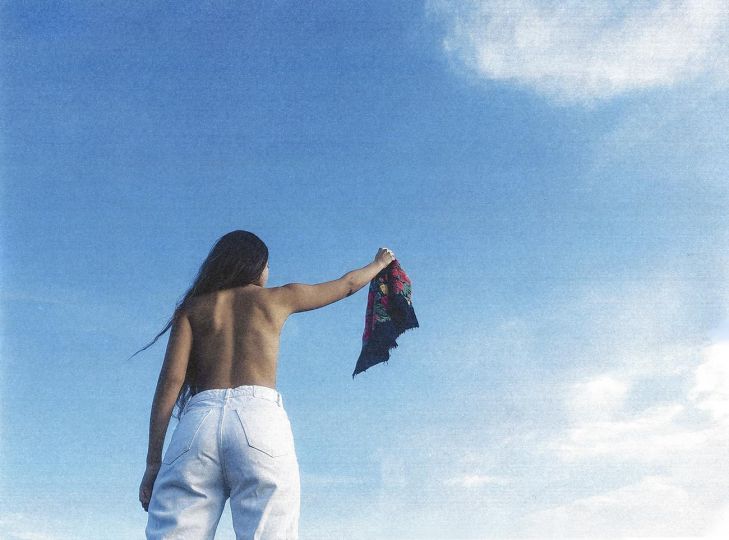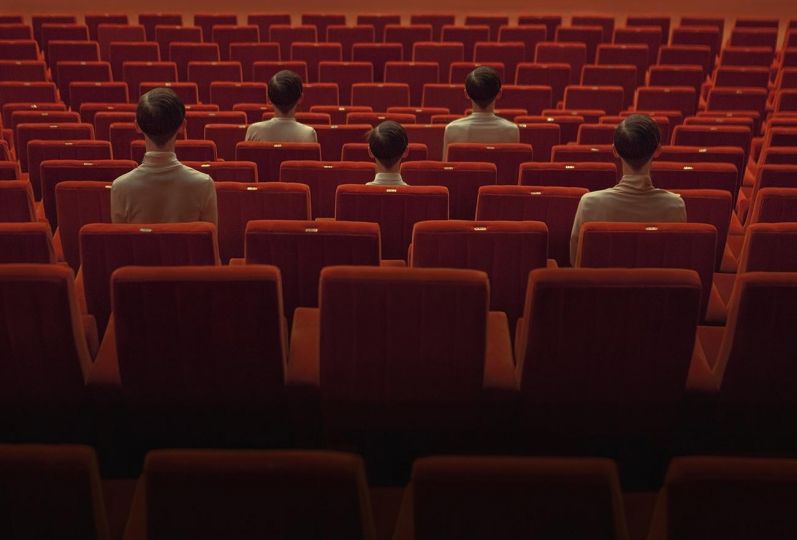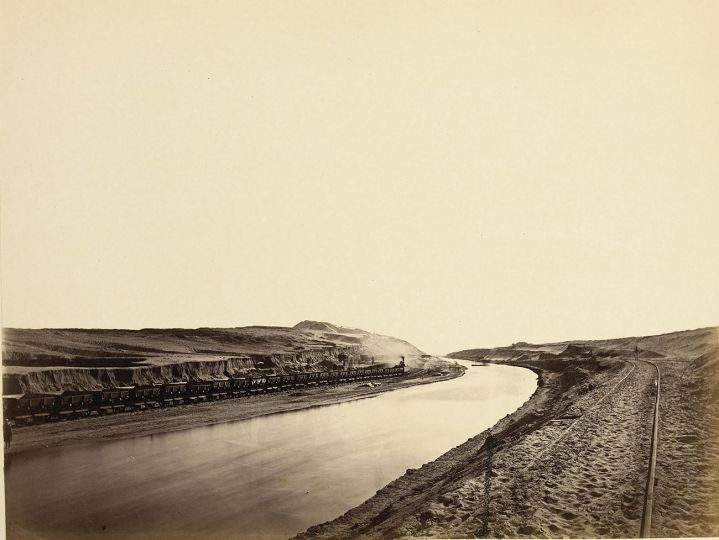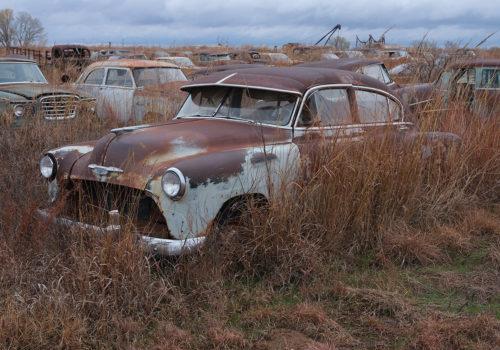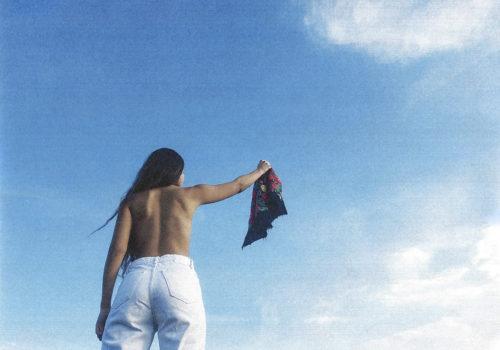Fen Ditton Gallery presents an on-line exhibition of Paul Hart’s photographic work to coincide with the release of his new publication RECLAIMED.
This Spring sees the publication of RECLAIMED the final of a series of three extraordinary photographic books by artist photographer Paul Hart in collaboration with Dewi Lewis Publishing. In this series ; FARMED, DRAINED and now RECLAIMED, Hart explores one of the most productive yet haunting agricultural landscapes in England : the Lincolnshire Fens.
Fen Ditton Gallery has worked closely with Paul Hart to select and present some key images from the series which opens as a virtual exhibition on 17th April 2020 — with a physical exhibition rescheduled for later in the year. Each of the selected black and white images – carefully composed with medium and large format film cameras, hand-printed by Hart on fibre-based silver gelatin paper reveals the artists characteristic ability to focus attention on an overlooked everyday beauty of this intensively farmed land. But his observations are also acute in other ways, exposing something of the unstable relationship between land and man in this ever-shifting, reclaimed waterland.
People do not feature in these images any more than they are evident if you take a walk along the edge of a Fen dyke: this is a mechanised, unpeopled world though still replete with traces of human activity. Few other artists have Hart’s ability to create images that give such resonant form to our paradoxical relationship with land. Each work evokes with poetic sensibility the muddy texture of the sensory living world, on whose health we all depend, but, by documenting all he sees — the brick houses overgrown with trees; the deserted concrete tracks; the lack of human community —he asks us to consider these agricultural edgelands in a new light and ask how productive they really are, and for whom.
PAUL HART
Paul Hart studied at the London College of Printing (UK) and Nottingham Trent University (UK), graduating in 1988 with a BA (Hons) in Photography. He has concentrated on long-term self initiated projects for seventeen years. Hart works primarily with the black and white analogue process and is one of a diminishing number of photographers whose practice involves all aspects of the photographic process from the negative through to the print. His work has been exhibited widely in the UK, most recently at ; The Photographers Gallery (London), The Austrian Cultural Forum (London), The Royal Academy of Arts (London), The Royal Photographic Society (Bristol), The University of Cambridge (UK) and internationally at art fairs including Photo London, Paris Photo and the AIPAD Show (USA). In 2018 Hart won the inaugural Wolf Suschitzky Photography Prize/Residency (London/Vienna) and was shortlisted for the Mark Rothko Memorial Trust Award (Daugavpils) and in 2019 was shortlisted for the HARIBAN Award (Tokyo). His work resides in important collections including the V&A Museum (London), the Ivor Braka Collection (London), the MoMA Library Collection (NYC) and the Martin Parr Foundation Library (Bristol, UK). Photo books are central to Hart’s practice having published four monographs to date. His first book TRUNCATED (Dewi Lewis 2009) received widespread acclaim. In 2019 he concluded a long-term project on The Fens (UK), photographed over a ten year period as a three-part series ; FARMED (2016), DRAINED (2018) and RECLAIMED (2020). This project, published by Dewi Lewis, has received international acclaim and a number of important awards.
Isabelle Bonnet is a photography art historian, writer and curator based in Paris. She holds an MA in Art History from Paris 1 Sorbonne, where she is currently studying for a PhD. Before resuming her studies she worked for 25 years in fashion photography in Paris and New York. In 2019, she curated the exhibition Home Sweet Home for the Rencontres d’Arles and the Institut pour la Photographie of Lille, and is the author of the eponymous book published by Textuel.
Denatured Landscape by Isabelle Bonnet
Landscape: ‘that which the gaze embraces’.1 While a landscape is always a place, a place is not systematically a landscape. It only turns into one when a gaze rests and lingers on it, a gaze that designates, appreciates, valorises and magnifies it. The gaze of a tourist, a photographer or a painter who studies it, contemplates it, immortalises it and, in the end, transforms it into a spectacle. Often a stranger’s gaze – because for those who work there, any place, no matter how enchanting, is merely the space of a practice. They cultivate it, preserve it or enliven it without seeing it as a landscape. The sociologist Raymond Williams thus affirms that ‘a working country is hardly ever a landscape’.2 For the concept of landscape to emerge, it takes ‘a self-conscious observer: the man who is not only looking at land but who is conscious that he is doing so, as an experience in itself’.3
Landscape is not a given: it has not always existed, and its appearance is closely linked to the modernity of the Quattrocento. The Middle Ages had until then celebrated the primacy of touch and hearing over sight, and limited the landscape to a few schematically drawn trees or rocks, whose function was to serve as a background to biblical figures. By upsetting the hierarchy of senses in favour of vision and inventing perspective, the Quattrocento imposed a new representation of space. Gradually, the shapes, volumes and colours of this simplified decor became more explicit, and while there remained a certain degree of stylisation, a greater sense of realism made itself felt. It was at the beginning of the sixteenth century, in Landscape with a Footbridge4 by the painter and engraver Albrecht Altdorfer, that the landscape suddenly appeared as having rid itself of all human presence to become the main subject of the painting. It owed this newly found status to the profound changes that occurred in the sixteenth century: the Copernican revolution, which put the sun at the centre of the universe, and was accompanied by a movement of secularisation marked by an anthropocentric surge: man, endowed with reason, progressively positioned himself at the centre of a world that he expanded by discovering new continents and tamed by mapping it. The landscape was both mastered and tested. A century later, it would definitively establish itself as an autonomous genre in the most prosperous regions of Europe: Flanders, Germany and northern Italy. But this landscape, which became visible in painting, would still remain invisible in language for a long time. Indeed, it was not until the end of the sixteenth century that the word ‘landscape’, originally derived from the Dutch landschap, entered the English language. But rather than its primary meaning of ‘region’ or ‘parcel of land’, the latter only retained its more recent pictorial definition, of ‘a picture depicting an expanse of scenery’,5 and it was only by the mid-seventeenth century that it referred to the expanse of scenery itself – a singular chronology that illustrates the fundamental connection between the landscape and the gaze.
The emergence of photography coincided, in Great Britain, with an infatuation with the national landscape that had originated in the previous century. The eighteenth century saw the flourishing of a typically English aristocratic art of landscaped gardens and a pictorial renewal initiated by J. M. W. Turner and John Constable. With them, English painting freed itself from the classicist references of Lorrain’s or Poussin’s landscapes. Now painters and aquarellists drew their inspiration from the British landscape, which was considered ‘worthy of painting’ – in other words, ‘picturesque’. A rural rather than agrestic landscape, a countryside landscape, its nascent concept constructed in opposition to the nineteenth-century industrial city.
As historian David Haigron explains, ‘living conditions in the mushrooming towns and cities were harsh because of the pollution, filth, crime and class segregation. It is therefore understandable that the national narrative chose to extol the virtues of a timeless and changeless countryside seen as the genuine embodiment of England/Britain’.6 The ensuing “rural idyll” magnified pastoral life, praising its simplicity and supposed moral values, its timelessness and permanence, and portraying it as an apolitical sanctuary, a refuge harbouring the soul of the country and the quintessence of British identity. The more the population became urbanised, the more the countryside found itself invested with imaginary virtues. Created and maintained by poetry, literature, painting and photography, this image of a rural Eden is still circulated today by modern media such as television. According to the historian of geography Brian Short, ‘the positive perception of the countryside is so strong that current views continue to elide this symbolic construct with what is essentially a gemeinschaft ideal, and with pastoralism and the aesthetic gaze, and thereby to elevate the rural idyll to a disproportionate and distorting status within British culture’.7
Because it enabled the creation and large-scale dissemination of this vision of the territory, photography promoted its ideological exploitation. Its reproducibility generated collective representations, consolidating a shared memory, a national narrative and an imaginary identity. The photographs of the American West, taken at the end of the nineteenth century, are exemplary from this point of view: the myth of a virgin, uninhabited and wild land they helped to build, and on which American identity was founded, justified conquest and colonisation. In the same period, but in a different context, French photography accompanied and fostered the awakening and rise of patrimonial awareness throughout the nineteenth century. Supported by public commissions and private initiatives, photographers produced a visual inventory of historic monuments. Beyond kindling a sense of national pride, this photographic register participated in the ‘rhetoric of power, wealth and legitimacy’ of the French state.8 While the French magnified ‘the living triumphs or the decaying monuments of man’s genius and pride’,9 as Roger Fenton put it, British photography in turn showed ‘the peaceful village; the unassuming church, among its tombstones and trees; […] the quiet stream with its water-lilies and rustic bridge; […] or the still lake, so still that you must drop a stone into its surface before you can tell which is the real village on the margin and which the reflection’.10 Fenton, but also Brecknell Turner, Bedford and the pictorialist Peach Robinson, to name but the best known photographers of the Victorian era, adopted a pictorial conception of the landscape, nostalgic for a bygone golden age and emptied of any utilitarian connotation and social substance: the “rural idyll” was to dominate British landscape photography for many years to come. Only by the second half of the twentieth century did a new vision emerge – that of Fay Godwin, for example, which drew on the tradition of the sublime and offered solitary, timeless landscapes infused with romanticism. But it was the landscapes of Raymond Moore and John Davies that definitively marked a break with the tradition inherited from the nineteenth century, each in their own way: dark and topographical in Moore, social and historical in Davies.
Paul Hart’s photography partakes in this new vision of the English landscape. His images incorporate the social, historical and political dimensions of the rural landscape – dimensions long ignored in one of the world’s most industrialised and urbanised countries. They materialise the dialectic of nature and culture, of the individual and the collective, of the real and the symbolic. A dialectic the photographer wholeheartedly embraces, as evidences his choice of a historically and politically emblematic subject: the Fens, these literally “denatured” marshlands converted into fertile and profitable fields over the centuries. According to historian Eric Ash, ‘the drainage projects were always a political issue […] redeeming the Fens would require not only draining the land, but also civilising the fenlanders in order to bring both into better alignment with the orderly government and market economy […] The land and people of the Fens were indeed transformed in the end, but the transformation had unintended ecological consequences that created at least as many problems as were solved’.11 Therefore, to photograph the Fens meant to exhibit a controlled nature, ordered and reasoned to excess, a landscape created from scratch in the manner of a garden, with the major difference that here, man’s appropriation of nature by means of work and technique is pervasively apparent.
Hart’s landscapes create a dialogue between art and document, lyricism and storytelling, the sublime and the ordinary. Almost everywhere, rectilinear and regular shapes unfold, impeccably drawn furrows responding to rows of trees, industrial constructions and metal structures. Vertical, horizontal and diagonal lines multiply across the pages, occasionally disrupted by an incongruous curve. They remind us that man’s ambitions for the domination and exploitation of nature and all things living have been fulfilled, as once dreamed of by Descartes, who wished to ‘render ourselves […] the lords and possessors of nature’.12 These divided, squared and geometrical landscapes look as though caught in a cage – hence the impression of immobility or near-paralysis they convey. No movement animates this nature morte, no bird awakens these low and heavy skies and endless horizons.
This frozen and silent, almost unreal atmosphere is further reinforced by the monochrome palette. Encompassing thousand shades of grey, from the darkest to the most iridescent, its manifold melancholy nuances reflect Hart’s disenchanted vision. Characterised by a partly crystalline, partly spectral clarity, these images of tragic beauty invite meditation – albeit a very different kind of meditation from that which befell the Romantics in front of untamed and grandiose natural landscapes. We are not looking at Edmund Burke’s notion of the sublime and his ‘delightful horror’.13 There is a feeling of danger in Hart’s landscapes, but it does not trigger ‘the sort of mixt passion of terror and surprize’ invoked by Burke.14 Here, there is no rapture or violent emotion, but rather an impression of uncanniness that insidiously caresses and envelops us. No aesthetic of shock, but rather an aesthetic of disaster in the making or already accomplished: the emptiness, absence and loss that infuse and implicitly connect all of Hart’s photographs reflect the contemporary eschatological imagination. Rural or urban, deserted and depopulated spaces serve as a pivotal scenery around which revolves the visual language of current post-apocalyptic narratives. After becoming a recurrent and emblematic motif of this type of stories, its function, according to historian Dora Appel, is to illustrate ‘the fear of a dystopian futurity’ and encourage us ‘to ask whether the empire of capital represents lasting progress or the road to decline’.15 Choosing as a theme lands disfigured by brazen productivism, translating them into landscapes of crepuscular beauty in order to underline their tragic arrangement and stark austerity, as Hart does, raises similar critical and political questions.
Unlike the sort of landscape photography that long incarnated the collective and historical body of the nation, Hart’s images take on a universal value: the battered and exhausted Fens resonate like a subtle metaphor for what humanity engenders and inflicts on itself. The delicate blackness of his images shatters the serene belief in a world in progress, the legacy of a century of Enlightenment which, caught up in its optimistic dynamics, forgot the fatal implications of greed. These are landscapes whose pathetic and ill-fated powerfulness fascinates us, like a mirror of our alienation, a perfect illustration of what the philosopher Slavoj Žižek intimated at the turn of the millennium: ‘The paradox is that it is much easier to imagine the end of life on earth than a much more modest change in capitalism.’16
Isabelle Bonnet
Translated by Patrick Kremer
Isabelle Bonnet is a photography art historian, writer and curator based in Paris. She holds an MA in Art History from Paris 1 Sorbonne, where she is currently studying for a PhD. Before resuming her studies she worked for 25 years in fashion photography in Paris and New York. In 2019, she curated the exhibition Home Sweet Home for the Rencontres d’Arles and the Institut pour la Photographie of Lille, and is the author of the eponymous book published by Textuel.
1 Paul Vidal de La Blache, cited in Gilles Sautter, ‘Le paysage comme connivence’, Hérodote: stratégies, géographies, idéologies, n° 16 (October–December 1979): 42.
2 Raymond Williams, The Country and The City (Oxford: Oxford University Press, 1973), 120. 3 Ibid.
4 Painted ca. 1518–20, National Gallery, London.
5 American Heritage Dictionary.
6 David Haigron, ‘Introduction’, in The English Countryside: Representations, Identities, Mutations, ed. Haigron (Basingstoke: Palgrave Macmillan, 2017), 12.
7 Brian Short, ‘Idyllic Ruralities’, in Handbook of Rural Studies, ed. Paul Cloke, Terry Marsden and Patrick Mooney (London: Sage Publications, 2006), 144.
8 Nathalie Casemajor Loustau and Michèle Gellereau, ‘Dispositifs de transmission et valorisation du patrimoine: l’exemple de la photographie comme médiation et objet de mediation’, Proceedings of the international colloquium on information and communication sciences ‘Interagir et transmettre, informer et communiquer: quelles valeurs, quelle valorisation?’, Tunisia, 2008, 3–11.
9 Roger Fenton, ‘On the Present Position and Future Prospects of the Art of Photography’, excerpt of a paper read during the Fifth Ordinary Meeting of the Society of Arts on 22 December 1852, Journal of the Society of Arts 1, no. 5 (December 1852): 51.
10 Ibid.
11 Eric H. Ash, The Draining of the Fens: Projectors, Popular Politics, and State Building in Early Modern England (Baltimore: Johns Hopkins University Press, 2017), 309–10.
12 René Descartes, Discourse on the Method of Rightly Conducting the Reason and Seeking the Truth in the Sciences [1637], Part VI, in The Harvard Classics, ed. Charles W. Eliot, vol. 34 (New York: P. F. Collier and Son, 1910), 50.
13 Edmund Burke, A Philosophical Enquiry into the Origin of Our Ideas of the Sublime and Beautiful, 8th edition, (London: J. Dodsley, 1776), 129.
14 Burke, A Philosophical Enquiry, 50.
15 Dora Apel, Beautiful Terrible Ruins: Detroit and the Anxiety of Decline (New Brunswick: Rutgers University Press, 2015), 152. 16 Slavoj Žižek in the documentary film Zizek! (dir. Astra Taylor, USA/Canada, 2005).
16 Slavoj Žižek in the documentary film Zizek! (dir. Astra Taylor, USA/Canada, 2005).
FEN DITTON GALLERY
23 High Street, Fen Ditton, Cambridge, CB5 8ST, England
[email protected] www.fendittongallery.com
RECLAIMED Exhibition Opens on-line 17th April 2020
https://www.fendittongallery.com/paul-hart-reclaimed
In the USA Joseph Bellows Gallery represents the work https://www.josephbellows.com/artists/c/contemporary
PAUL HART : RECLAIMED
Dewi Lewis publishing
Clothbound hardback 108 pages, 52 Duotone plates 295mm x 295mm ISBN: 978-1-911306-64-3
£ 35

